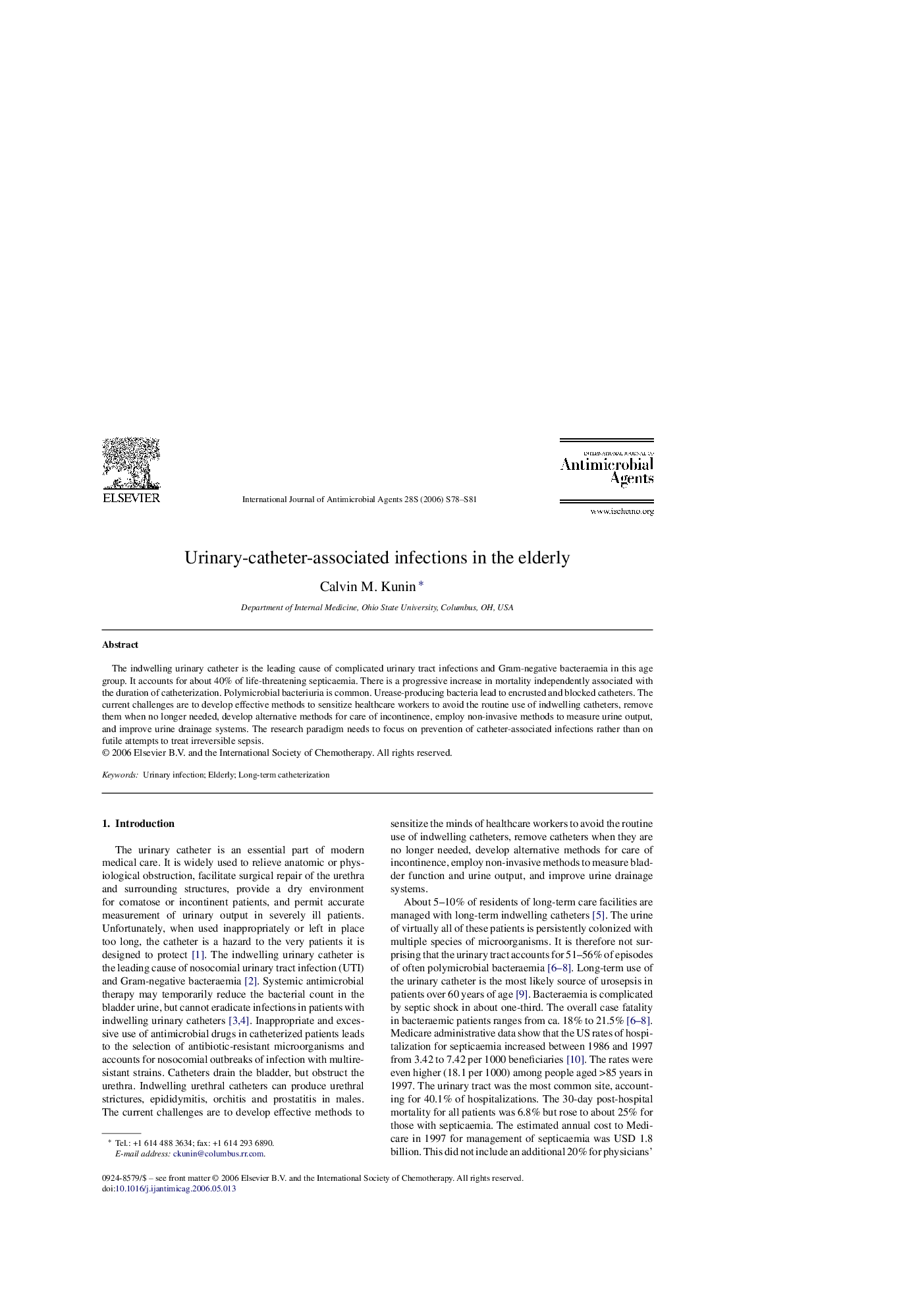| Article ID | Journal | Published Year | Pages | File Type |
|---|---|---|---|---|
| 3361540 | International Journal of Antimicrobial Agents | 2006 | 4 Pages |
The indwelling urinary catheter is the leading cause of complicated urinary tract infections and Gram-negative bacteraemia in this age group. It accounts for about 40% of life-threatening septicaemia. There is a progressive increase in mortality independently associated with the duration of catheterization. Polymicrobial bacteriuria is common. Urease-producing bacteria lead to encrusted and blocked catheters. The current challenges are to develop effective methods to sensitize healthcare workers to avoid the routine use of indwelling catheters, remove them when no longer needed, develop alternative methods for care of incontinence, employ non-invasive methods to measure urine output, and improve urine drainage systems. The research paradigm needs to focus on prevention of catheter-associated infections rather than on futile attempts to treat irreversible sepsis.
